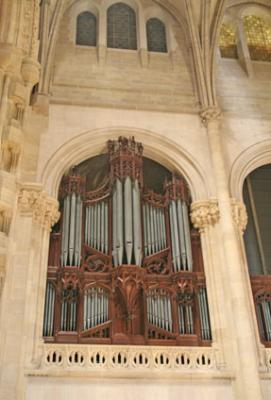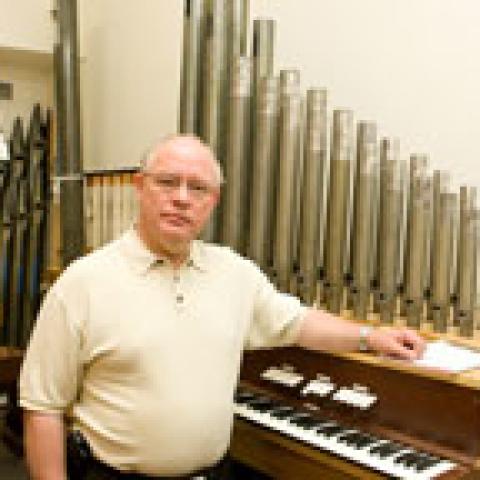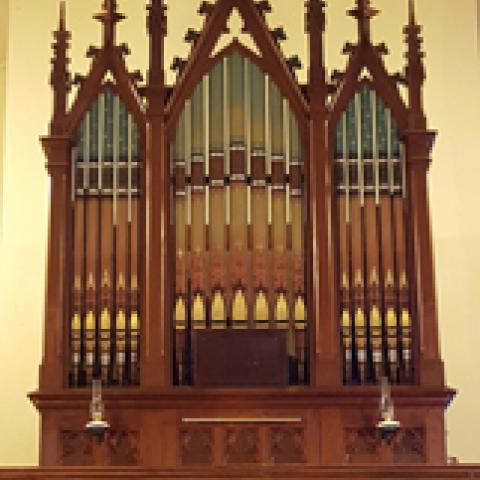
The Cathedral Church of Saint John the Divine entrusted the restoration of Aeolian-Skinner Opus 150-A to Quimby Pipe Organs, Inc., of Warrensburg, Missouri. In consultation with the Cathedral’s Project Consultant, Douglass Hunt, Michael Quimby drew up detailed guidelines for a restoration of the mechanical components of the pipe organ and pipework. Apart from the casework, the entire organ was loaded into five 18-wheelers and transported to Missouri for restoration. The work took two years and to date it is the largest project that Michael Quimby’s firm has ever undertaken. All the pipework was cleaned, had the dents removed and was put across the voicing machine to correct any irregularities in the voicing.
Associates of Quimby Pipe Organs, Inc., who made significant contributions to the restoration of the organ in the Cathedral of Saint John the Divine include Dave Beck, Bart Colliver, Tim Duchon, Chris Emerson, Timothy Fink, Eric Johnson, Joe Lambarena, Kevin Lors, Wes Martin, Brad McGuffey, Mark Muller, Joseph Nielsen, Janille Rehkop, Michael Quimby, Jim Schmidt, Mike Shields, John Speller, Chirt Touch and Nah Touch. The Cathedral’s Curator of Organs, Douglass Hunt, also played a very valuable part in the project.
The rededication of the Cathedral of Saint John the Divine and its organ took place at a special service on Sunday, November 30, 2008, the 67th anniversary of the original dedication of the Nave. Participants included the Dean of the Cathedral, the Very Rev. Jamees Kowalski; the Bishop of New York, the Right Rev. Mark Sisk; the Cathedral’s new Director of Cathedral Music and Organist, Bruce Neswick; its Associate Organist and Choirmaster, Timothy J. Brumfield; the Presiding Bishop of the Episcopal Church, the Most Rev. Katharine Jefferts Schori; and both the Senators for New York, the Honorable Hillary Rodham Clinton (now Secretary of State in Barack Obama’s cabinet) and the Honorable Charles Schumer. The organ has 151 ranks of pipes, 101 actual stops (not including borrows, duplexes, tremulants or percussions) and 8,514 pipes on 7 divisions spread over 4 manuals and pedals. www.quimbypipeorgans.com




